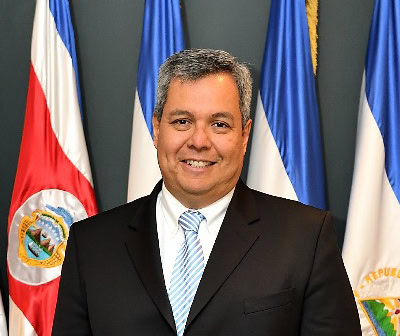Governments in Latin America and the Caribbean are kick-starting infra-structure projects, hoping to join the nearshoring boom. But corruption and other hurdles persist.
Mexico’s President-elect Claudia Sheinbaum announced three new passenger train lines in July as one of her victory promises, highlighting a potential traffic jam for the country’s nearshoring boom and a larger regional need for infrastructure investment.
The following month, however, Morgan Stanley issued an “Underweight” warning on Mexican shares based on judicial reform plans announced by outgoing President Andrés Manuel López Obrador. Morgan Stanley warned, “These changes may also increase uncertainty about the capital expenditure outlook amid bottlenecks in nearshoring capacity.”
This cocktail of opportunity and hazard typifies Latin America’s decades-old struggle to get the development equation right, given lack of adequate roads, industrial and vehicular parking, and specialized infrastructure—and dubious governing practices.
The standard of infrastructure is not the only issue. Others include duplication of functions; virtually every country in Central America has an interoceanic rail plan to compete with the Panama Canal. But a lack of financing, a deficit of universal building codes, and issues with projects that are built over multiple municipalities, each having their own set of standards, conspire to keep them on the drafting table. At a granular level, a series of sinkholes in 2007, 2010 and 2023 in Guatemala City have been blamed on a lack of up-to-date mapping of the capital’s drainage system. Eminent domain laws may not exist or have been rarely used, leading to a lack of legal certainty.
“It’s clear there’s a big gap between what’s been identified as needed in the Latin American and Caribbean region—more than $2.2 trillion in water, sanitation, transport and telecom sectors, etc., each year”—and what’s available, says Miriam Figueroa, Latin America practice group regional co-leader for public-private partnerships (P3) & infrastructure at law firm DLA Piper. “That’s about 3.1% of GDP each year and that is not happening.”
There are signs of progress, however. In May, Chile announced $17 billion in public works concessions for the 2024-2028 period, representing 5.25% of its 2023 GDP. Peru plans 80 projects across transportation, ports, logistics, health-care and other social infrastructure. Ecuador has a secretariat for public-private partnerships and in July launched a P3 registry.
Accordingly, experts remain bullish on Latin America, but warn of micro and macro issues that remain outstanding.
Getting Up To Speed
Countries in the region are struggling to get up to speed. Literally.
“Logistical and transportation deficiencies cost Mexico about 169.3 billion pesos [about $8.8 billion] in 2023,” says Luis Mendez, president of Mexico’s Chamber of Construction Industry.
Railways are not the future in Central America, however, argues former Central American Bank for Economic Integration (CABEI) head Dante Mossi, due to the short-term nature of governments, delays in feasibility studies, and finance concerns.
“In the case of Costa Rica, the most advanced [in terms of rail feasibility studies],” Mossi says, “the new administration, even with charges of 0.28% per year for a 40-year term, does not want to carry out the investments, nor will they do so. There is no time left.”
Some multilaterals are now veering away from mixing funds with development banks and governments, Mossi notes, and are less likely to facilitate build-operate-transfers. Infrastructure projects make up around $15 billion in loans from the CABEI alone. Instead, Mossi expects that the next phase will be electric mobility via low-cost Chinese-made cars, buses, and heavy-transport trucks.
This fits a strong move toward sustainability and resilience. At the World Bank’s October 2023 annual meeting, bank chief Ajay Banga called for a review of the annual $1.25 trillion spent by governments and multilaterals on agriculture, fuel, and fisheries subsidies. In January, at the World Economic Forum, he warned that governments and multilaterals do not have trillion of dollars to spend and that removing barriers to private-sector investment will be necessary to solve the world’s bigger development problems.

Caribbean leaders have recognized the need and joined in pleas for more access to finance, pledging to use artificial intelligence (AI) to curb corruption and acknowledging the need for resilient infrastructure. As if to underscore the point, July’s Hurricane Beryl caused an estimated $6.8 billion in damage; the Caribbean is expected to face up to a dozen more storms before this year’s season ends.
“The Caribbean experience should serve as a lesson to the rest of Latin America in terms of the consequences of not having infrastructure or planning in anticipation of disasters,” DLA Piper’s Figueroa says. From the incorporation of disaster risk management when projects are designed to establishing up-to-date local building codes, the maintenance factor is critical to keeping these countries prepared, she argues.
In the long run, it is also more cost-effective. “The cost of disaster and the collapse of infrastructure because of disasters is much more expensive,” she notes.
Following 2017’s Hurricane Maria, Puerto Rico Governor Ricardo Roselló estimated $90 billion in damage. Alongside Costa Rica and the Dominican Republic, Puerto Rico hopes to benefit from the nearshoring boom that has centralized around Mexico. As a US territory, it benefits from a sound legal framework and access to the emergency federal funds that restored the island’s power grid and critical infrastructure.
Over the past year, however, Figueroa says that increasing insurance costs prompted last-minute withdrawals by project bidders across the region. This has been most keenly felt in Florida and California but is spreading across the US and the Caribbean.
Besides disaster management, improved transport infrastructure is needed to make Latin America more competitive, enhance commerce and tourism, and eliminate long-standing intraregional delays. Speaking to Bloomberg online, then-CEO Guillermo “Willy” Castillo of Cerveceria CentroAmericana noted, “Guatemala has an advantage in terms of geographic operation, but the port system is weak. We must think of an integrated region. In Central America, there are specialized ports in El Salvador, Honduras, and the Panama Canal. But the problem we have as a region is interconnection, and moving around the region is complex.”
Corruption’s Toll
Corruption remains the headline-grabbing barrier to development.
“Corruption does more than anything else to destroy the very essential relationships in society that are needed to have peaceful, harmonious development,” John Githongo, CEO of Inuka Kenya Trust, said in a recent World Bank blog post. “It undermines the glue that holds a society together.” Central America loses up to $13 billion yearly via corruption, according to a 2019 Anti-Corruption Digest report.

This may be scaling upward, if a recent case in Guatemala is indicative. The tax authorities recently unveiled Caso B410, which alleges that at least 800 million Guatemalan quetzals ($102.6 million) of taxable income was lost to one individual who was the legal representative of 410 companies that appear to have not executed any public work and were essentially false fronts. The true cost to the Guatemalan state could be in the vicinity of 6.4 billion quetzals.
Despite the many barriers to development Latin America faces, the past 10 to 20 years in the Dominican Republic suggest a way forward, says Francisco Cerezo, chair of the US-Latin America practice at DLA Piper. Creating a sound legal framework has been critical to attracting foreign investment to the island nation, along with addressing multiple-jurisdiction, eminent-domain, and recordkeeping issues.
Digital infrastructure such as data centers, broadband access, and the energy to power them, offer opportunities going forward, he says, although creating it will require a significant investment on the part of governments, the private sector, and private equity.
To benefit, foreign investors must understand the region better and avoid same longtime blind spots. Necessary steps, Cerezo says, include “due diligence—well beyond the type you’d do in the US or Canada—really mapping out the outreach to local communities and stakeholders, and considering bringing a local partner into the management or equity structure.”
But with trillions of dollars needed to stem migration, improve commerce and connectivity, stimulate tourism, bridge the digital and interconnectivity divide, and provide the energy to power a potential nearshoring boom, Latin America and the Caribbean find themselves at a crossroads. Despite the hurdles, these challenges represent opportunity for worldwide investors looking to step in with the support of multinationals and national governments.




